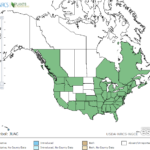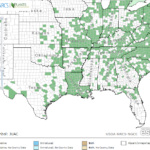Juncus acuminatus
USDA, NRCS. 2018. The PLANTS Database (http://plants.usda.gov, 28 March 2018). National Plant Data Team, Greensboro, NC 27401-4901 USA.
Illustration: USDA-NRCS PLANTS Database / Britton, N.L., and A. Brown. 1913. An illustrated flora of the northern United States, Canada and the British Possessions. 3 vols. Charles Scribner’s Sons, New York. Vol. 1: 481.
What is Tapertip Rush?
Physical Characteristics
Leaves:
- Few by the base
- Scattered along the stem
- 0.05-0.13 inches thick near the middle
- Thin at tip
Flowers:
- 1.19-5.91 inches long
- Few branching
- Sepals 0.13-0.16 inches long
- Petals 0.09-0.14 inches long
- Reddish-brown in color
- 3 stamen
Fruit:
- Seed pod
- Egg-shaped
- 0.09-0.13 inches long
Stem:
- Hollow
- 5.5-31.5 inches long
- Upright
- 0.05-0.13 inches thick
Where Does it Grow?
Tapertip rush can be found in wet meadows, one the edge of ponds, streams and marshes.
Pros and Cons of Tapertip Rush
Submerged portions of all aquatic plants provide habitats for many micro and macro invertebrates. These invertebrates in turn are used as food by fish and other wildlife species (e.g. amphibians, reptiles, ducks, etc.). After aquatic plants die, their decomposition by bacteria and fungi provides food (called “detritus”) for many aquatic invertebrates.


